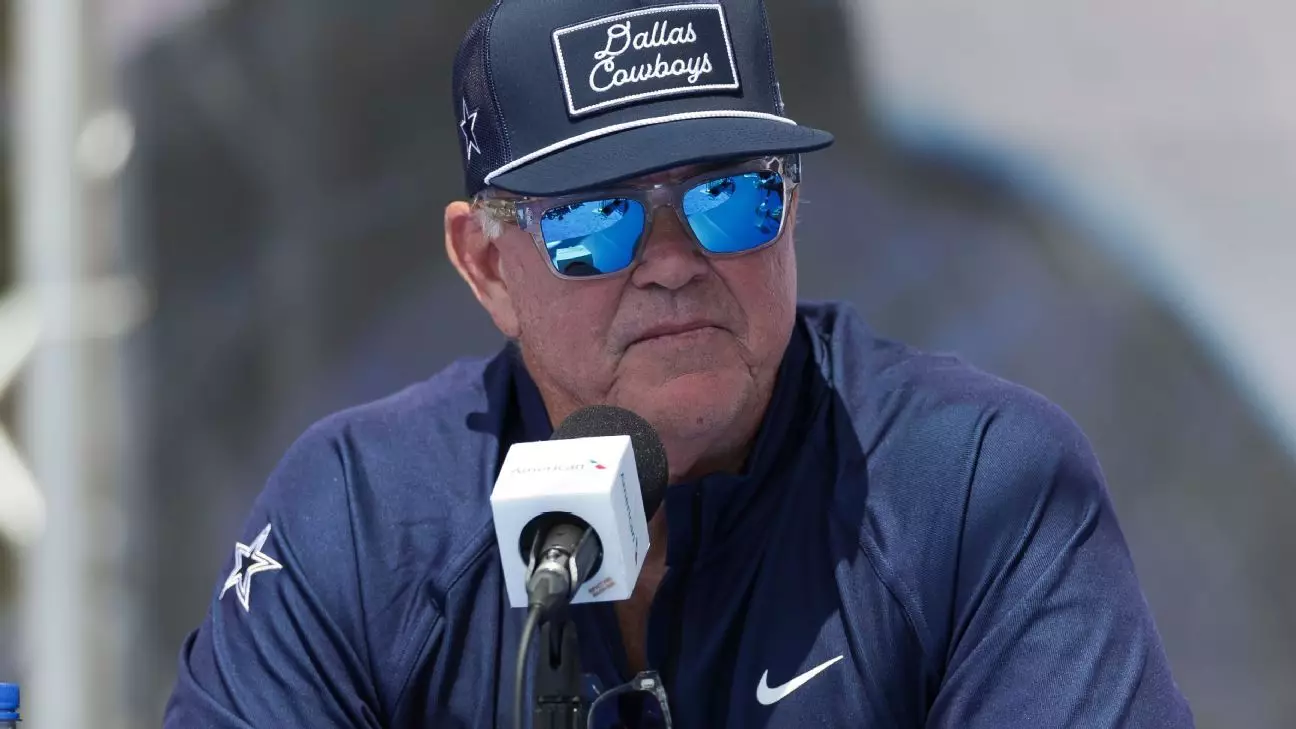The Dallas Cowboys have undergone a significant shift in their approach to roster management as they head into the 2025 NFL season. Where the previous year’s rallying cry of “all-in” emphasized a full-throttle commitment to assembling a Super Bowl contender, the theme for 2025 has turned to “selectively aggressive.” This evolution reflects a more strategic mindset, as expressed by executive vice president Stephen Jones during the NFL scouting combine. Historically, the Cowboys have aimed to address their key needs and musts prior to the draft, allowing for the flexibility to draft the best available talent. This year, despite the lessons learned from last season, they face the challenge of recalibrating their approach to free agency and the draft.
To contextualize this change, it’s essential to understand the nuances behind the terms “all-in” and “selectively aggressive.” The “all-in” mantra conveyed an urgency to acquire talents at virtually any cost, a philosophy that sometimes led to questionable choices in team composition. In contrast, “selectively aggressive” suggests a more measured and patient approach, focusing on the right opportunities rather than simply aiming for a big splash in free agency or trades. This strategic transition is indicative of a broader trend in the league where teams are increasingly cautious about the financial implications of player contracts.
At the forefront of the Cowboys’ priorities is the imperative to secure All-Pro pass rusher Micah Parsons with a long-term contract. As Parsons enters the final year of his rookie deal, discussions about an extension are imminent. The Cowboys have yet to sit down with Parsons’ representatives, but with his potential to become the highest-paid defensive player, it’s critical that the organization navigates this negotiation with care. Parsons currently stands to earn around $21 million through his fifth-year option, but the stakes are high for both parties.
Stephen Jones highlighted the intricacies involved in contract negotiations, noting that each player’s situation is unique. Previous negotiations with other key players, like wide receiver CeeDee Lamb and quarterback Dak Prescott, have made it clear that timing and events can significantly impact discussions. The fact that Lamb’s and Prescott’s deals were finalized late in the training cycle illustrates the unpredictability that often accompanies contract talks. As the team looks to refine its approach, there’s optimism that the Parsons negotiation will unfold more smoothly.
The Cowboys face a critical week ahead as they enter negotiations with several soon-to-be free agents, including defensive tackle Osa Odighizuwa and veteran defensive end DeMarcus Lawrence. The talks around Odighizuwa indicate a willingness to engage in long-term solutions rather than merely addressing pressing needs on a short-term basis. Simultaneously, the presence of Lawrence, who has been a stalwart for the Cowboys since his second-round selection in 2014, represents a potential emotional and leadership void should he not be re-signed.
With impending retirements, particularly that of offensive lineman Zack Martin, the organizational landscape is beginning to shift. If Lawrence is re-signed, he would assume the mantle as the longest-tenured Cowboy, underscoring not only a potential strategic decision but also an emotional one for the franchise. Jones has emphasized the respect and gratitude owed to Lawrence, highlighting the player’s commitment throughout his tenure. However, the financial reality looms large, as released or restructured contracts will play a crucial role in shaping the team’s budget for the coming seasons.
Recent developments indicate a substantial increase in the NFL salary cap for the 2025 season, projected between $277.5 and $281.5 million. This boost provides the Cowboys with additional financial flexibility. The organization is expected to restructure contracts for Prescott and Lamb, which could free up approximately $57 million in cap space. Such strategic financial maneuvers are critical as they allow the Cowboys to explore opportunities not only within their existing roster but also on the free-agent market.
Jones has made it clear that improving the team is not just a goal—it’s a steadfast intention. With a renewed focus on being “selectively aggressive,” the Cowboys are positioned to not merely react to market conditions but to proactively pursue the moves necessary to elevate their competitiveness. This evolving philosophy, coupled with the room for strategic financial adjustments, could very well set the stage for a transformative season.
The shift from an “all-in” mentality to one of “selectively aggressive” poses both challenges and opportunities for the Dallas Cowboys. The upcoming period is crucial, as the organization strives to ensure it not only retains its current core but also builds for the future. It remains to be seen how effectively they will balance aggressive moves with prudent decision-making, but one thing is certain: the Cowboys are rethinking their approach as they aim for sustained excellence in the NFL.

